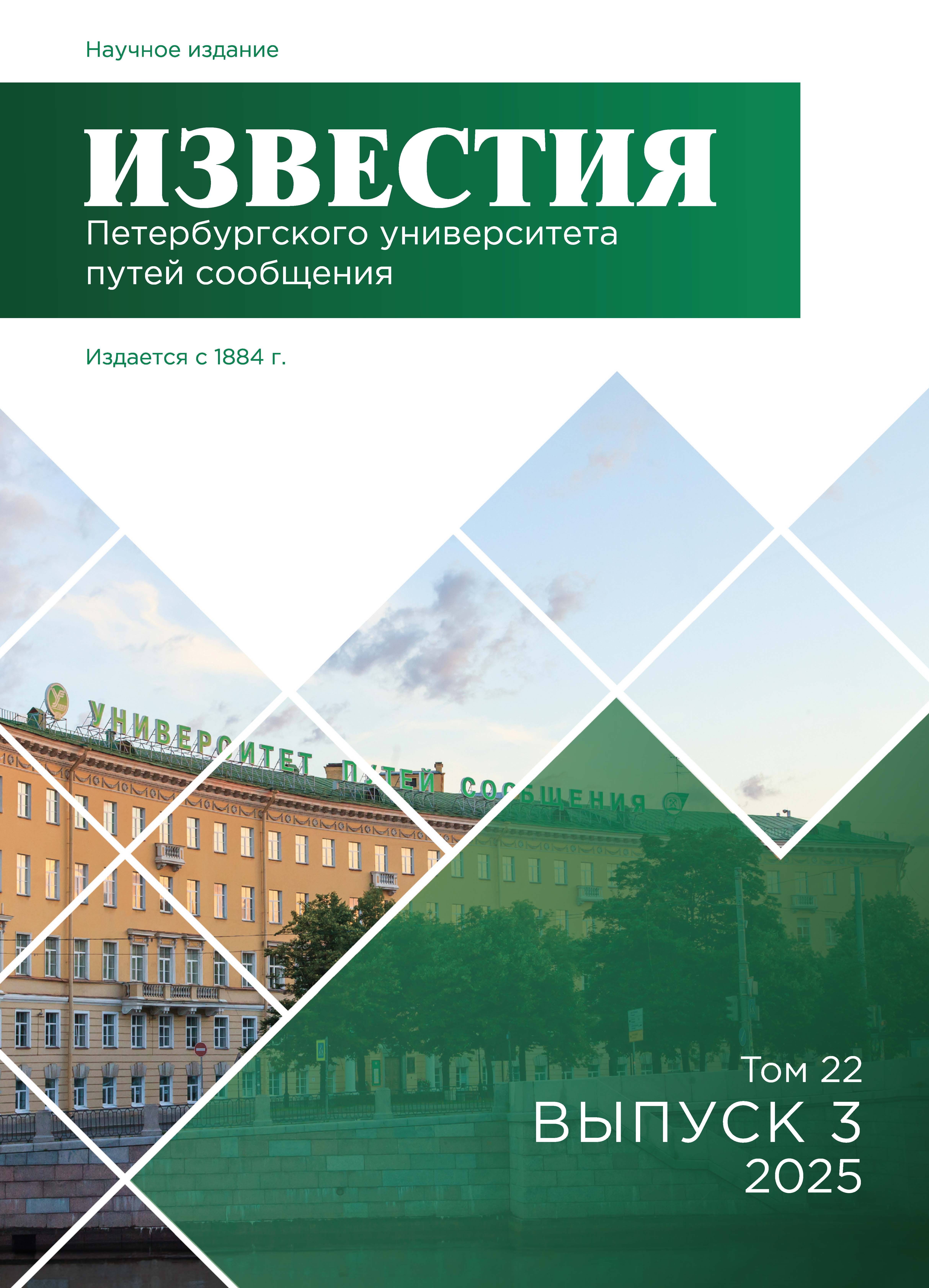Russian Federation
Russian Federation
Russian Federation
Purpose: To ascertain the efficiency of special contact wire application (SCW) in ensuring the rolling stock operational capacity in conditions of drip icing. Drip icing is most intense at air temperatures ranging from 0 to –5 °C during periods of “wet snowfall” and wind. The principle of the innovative proposal. The contact wire features a specially designed relief in its upper section, which is factory-rolled and has a thin, heat-insulating anti-icing coating with hydrophobic properties that preserves the shape of the relief. The SCW special relief and hydrophobic properties slow down the removal of the released heat from crystallization of water droplets deposited on the wire. This results in the formation of an ice layer, which rapidly transforms into a substantial ice deposit, forming an icy-snow “clutch”. Atmospheric water that settles on the wire head accumulates on it in the form of large droplets that break down even before they freeze. The majority of the water is thrown downwards from the SCW before it freezes, and a small part of it freezes on the lower section of the wire, changing the form of ice deposition. Instead of a large and solid ice-snow clutch covering the wire from all sides, “icicles” with a small area of contact with the wire are formed on the wire. They can be removed relatively easily, mechanically or chemically, but in the event of strong winds causing the wires to sway, they will fall off. Results: A thorough review of ice control methods has been conducted from the perspective of efficiency, incorporating a financial analysis of initial costs, operating expenses, economic impact, and the payback period. The efficiency of an innovative approach to the application of SCW has been demonstrated, encompassing the creation of a raised surface relief on the upper section of the wire in the area of its head and groove, by applying a thin, two-layer coating that preserves the surface relief. The primary function of the initial inner coating is to provide thermal insulation, while the secondary coating serves to ensure the non-wettability (hydrophobicity) of the wire surface. The innovative SCW has been proven to be effective in preventing the heat removal in the phase of water cristallasation on the wire surface and breaking the water film on the wire surface to form large droplets that roll down before the freezing point.
Contact wire, icing, heat transfer, phase transition, relief surface, hydrophobic coating, hydrodynamics of droplets, turbulence, simulation, finite difference method
1. Paskar' I. N. Bor'ba s obledeneniem provodov na liniyah elektroperedach / I. N. Paskar', A. A. Chernosliv, O. N. Skvorcov. — Kemerovo: Izd-vo KuzGTU, 2015. — 145 s.
2. Sanakulov A. H. Sovershenstvovanie raboty tokopriemnikov podvizhnogo sostava s kontaktnoy set'yu / A. H. Sanakulov, A. N. Safin // Proektirovanie i issledovanie tehnicheskih sistem: mezhvuzovskiy nauchnyy sbornik. — Naberezhnye Chelny: INEKA, 2010. — Vyp. № 2(16). — S. 61–67.
3. Vasil'ev Yu. A. Predotvraschenie i likvidaciya gololednyh obrazovaniy v raspredelitel'nyh setyah OAO «Setevaya kompaniya» / Yu. A. Vasil'ev, S. A. Grebnev. — Kazan': OAO «Setevaya kompaniya», 2012. — 76 s.
4. D'yakov A. F. Predotvraschenie i likvidaciya gololednyh avariy v elektricheskih setyah / A. F. D'yakov. — Pyatigorsk: RP «Yuzhenergotehnadzor», 2000. — 284 s.
5. European Railway Agency. Best Practices for Winter Resilience in Rail Infrastructure: Technical Report ERA/2020/ TR/01. Brussels, 2020. — 45 p.
6. SNCF. How We Meet the Challenges of Extreme Cold. — 2021. — URL: https://www.groupe-sncf.com/en/ group/behind-the-scenes/traffic-flows/extreme-cold (data obrascheniya: 15.05.2025).
7. Neftegaz.RU. Provoda s antigololednym pokrytiem — nadezhnaya zaschita LEP zimoy. — URL: https://neftegaz.ru/science/Oborudovanie-uslugi-materialy/761508-provoda-s-antigololednym-pokrytiem-nadezhnaya-zashchita-lep-zimoy/?ysclid=me06i2tbti532923411 (data obrascheniya: 12.01.2024).
8. Patent № 2827574 Rossiyskaya Federaciya, C-1 RF, MPK 01B 5/2. Kontaktnyy provod s antiobledenitel'nym pokrytiem dlya vozdushnyh liniy elektroperedach / V. P. Bubnov, V. A. Barausov, V. I. Moiseev; zayavl. № 2024106114 ot 05.03.2024; Byul. 28.
9. KuzSTU. Metody bor'by s gololedom na provodah LEP: sb. materialov. — Kemerovo: KuzGTU, 2015. — 89 s.
10. Zhang Y. Advanced Anti-Icing Coatings for Railway Contact Wires: A Review of Hydrophobic and Photothermal Materials / Y. Zhang, X. Wang, H. Li // Materials & Design. — 2023. — Vol. 225. — Pp. 111–123. — DOI:https://doi.org/10.1016/j.matdes.2023.111123.
11. Wang L. Durable Superhydrophobic Coatings for Ice Prevention in Extreme Climates: Experimental and Economic Analysis / L. Wang, T. Chen, R. Zhang // Cold Regions Science and Technology. — 2021. — Vol. 180. — Pp. 103–115.
12. Boynovich L. B. Metody bor'by s obledeneniem LEP: perspektivy i preimuschestva novyh supergidrofobnyh pokrytiy / L. B. Boynovich, A. M. Emel'yanov // Zhurnal ELEKTRO. — 2011. — № 6.
13. Buitenhuis J. Reduction of ice adhesion on nanostructured and nanoscale slippery surfaces / J. Buitenhuis, L. Xu, M. E. H. van der Meer, C. G. J. Koenders et al. // Applied Surface Science. — 2023. — Vol. 630. — Art. 157570.
14. GOST 839—2019. Provoda dlya vozdushnyh liniy elektroperedachi. Tehnicheskie usloviya. — M.: Standartinform, 2019. — 32 s.
15. Kamskiy kabel'. Novye kompaktirovannye provoda ASp s antiobledenitel'nym pokrytiem: press-reliz. — Perm', 2021. — 5 s.









